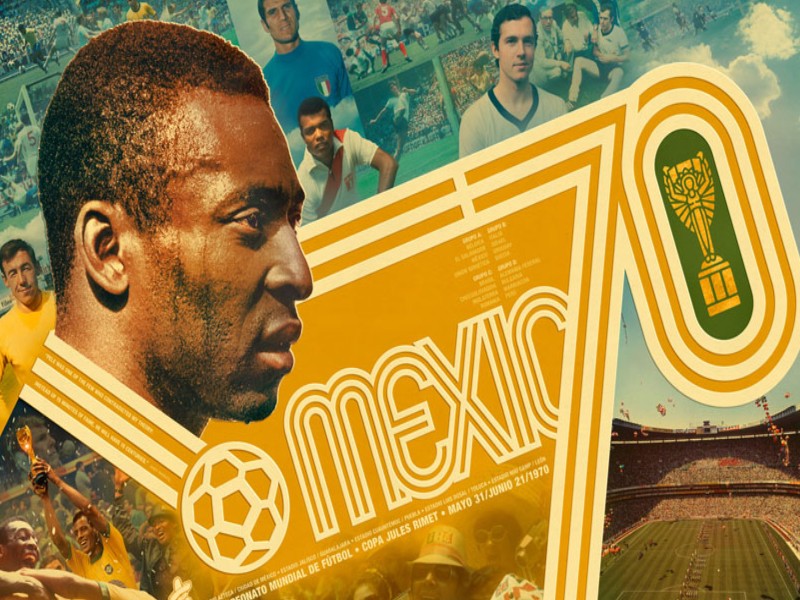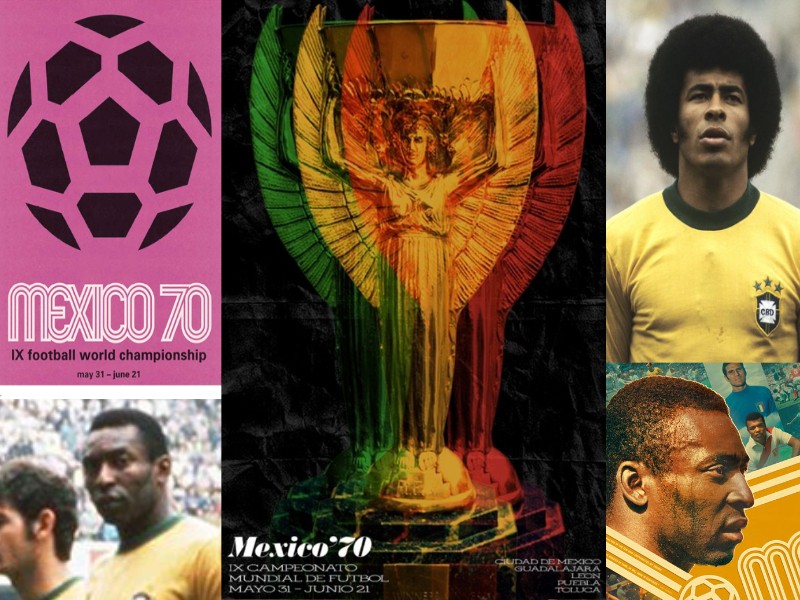
Golden Age of Football…1970’s
The golden age of football started for many when the Mexico 1970 World Cup started. Which was the first tournament televised in full colour and the first to embrace global Marketing. It marked a watershed for World Cup broadcasting. It was the first tournament to send live pictures across the Atlantic. Beamed by satellite to hungry television audiences in Europe.
Golden Age of Football…1970’s
When a lady asked the jazz pianist Thomas “Fats Waller” to explain rhythm he responded…
” Lady if you gotta ask you ain’t got it”.
Fats Waller
When Pelé won his third World Cup in 1970 he didn’t have to say anything. As we know Music is about sound…Sport is visual and the essence of both comes from the soul.
Pelé was not the first Brazilian to describe football as the beautiful game. Another of his country’s football stars coined the phrase years earlier. Didi, coined the phrase decades earlier. Few would argue, however that anyone ever played the game more beautifully than Edson Arantes do Nascimento…aka Pelé.

Everyone with an interest in football was mesmerised and dazzled by the skill and technique of the South American wizards who for the first time exploded in full technicolour on to the TV screens all over the world.
Can you imagine the world of football all of a sudden becoming full technicolour in your home broadcasted from a city that is as vibrant and hot as the sun..providing you had a colour TV at that time of course.
How things have changed there’s so much football on TV now everyone has become an armchair fan to some extent.
Is Virtual The Reality Today?
Clearly watching the game at home in relative comfort does have some advantages you can have a cold drink of beer in the comfort of your own seat. And for those with no time to spare they are always action replays and pundits showing you what really happened.
By going on the screen and drawing lines and arrows telling you what did or should have happened. So much has changed over the course of a few decades from a technology in sports perspective.
Which giving the current crisis in football considering the issues around COVID. Makes you think that innovation will take the form of direct virtual 360 surround sound in the stadium match day experiences.
Which has the potential to double a stadium’s capacity if and when COVID is under control. A modern stadium could sell full on virtual emerged experiences just as if you was actually there yourself with VR headsets at home. However I digress: the whole point of this post was to talk about the beauty of our beautiful game at a time when football still had its innocence.
Back to the 70’S
The 1970 World Cup in Mexico was a Triumph over cynicism, over forbidden heat and altitude, and all amid the chaos of the Mexican hosts.
The thin air made it difficult to breathe, a free kick specialist like Rivelino used it to advantage. Applying spin and force that seemed to make the flight of the ball deviate to his will.
And Mexico’s habit of just letting things unfold dovetailed nicely with the off-the-cuff brilliance that took Brazil from it’s initial camp in Guadalajara to the ultimate victory in Mexico city’s massive 112000 capacity Azteca Stadium.

The Cost of the Cup
And let’s not forget the physical and mental hardened mentality it took to win in temperatures that touched 98 degrees Fahrenheit.
The games were scheduled for midday kick off’s. Timed for the benefit of European TV viewers. The way the Brazilian squad prepared for this mission to regain the World Cup that had been snatched from them by England 4 years earlier. It was also a monumental task temped with a dedication that has not been seen ever since.
The preparation and money that went into preparing the Brazilian squad was really unprecedented. For example no team today would be guaranteed 3-months solitary confinement costing 500.000 back then.
This was the commitment of the Brazilian squad to regain the World Cup putting them back on top as the world’s best football players. (Adjusted for inflation, $500,000.00 in 1970 is equal to $3,408,143.24 in 2020. Annual inflation over this period was 3.91%).
The English who at the time were the current world champions. Arrived in Mexico putting the trust in slow dissolving sodium tablets against the dehydrating effects of the climate.
Pele and the Brazilian squad where running and training in the searing heat for 3 months prior to the tournament. Coupled with what can only be described as a magical team of talent. Carlos Alberto was so strong, and such a leader with his surging runs from right back. Jairzinho, the winger who scored in every match in a tournament, had such muscular thighs that England’s left back Terry Cooper admitted he lay awake at night wondering how to compete against him.
The 73 mph World Cup Shot
The Brazilian Samba
To win the 1970 tournament, Brazil outplayed three former world champions in tern: England, then Uruguay and finally Italy. The final game wasn’t even close.
The Brazilian squad torn apart Italy’s so called catenaccio ( translate: A bolt in this context a defence which held everything together). However the Brazilian wizards ripped it apart like as if it was paper.
The towering figure of left back Giacinto Facchetti, the cunning, creative Sandro Mazzola and the brooding striker Luigi Rava where no match for Brazil and final score, 4-1, what we were witnessing was the most compelling team of that era.
The 1970s world cup was indeed the Golden Age of football, a true contrast between the Latin and European versions of the game before it became the homogenised one style suit all we so often see today.
Contact us for support on freelance or a flexible basis if you want to reach sports fans for your brand:
Email us @ Dynamic Sport Marketing Or call us: +31 0625568958
For a full list of our services click this link for an overview of our easy consulting services